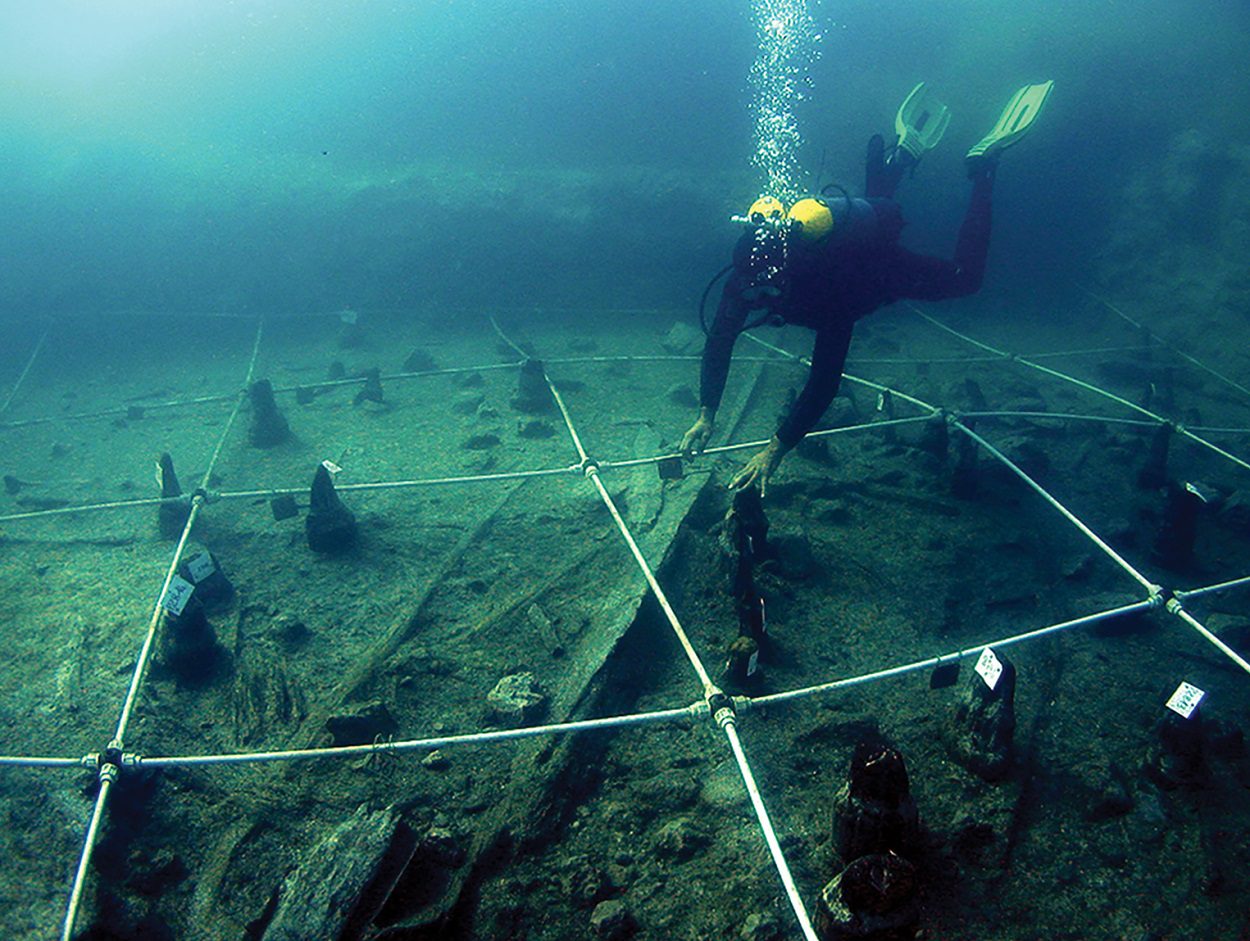Underwater archaeologists excavating at the submerged La Marmotta settlement near Rome, Italy, have uncovered textiles, basketry and cordage from the Early Neolithic Period.
La Marmotta was first discovered in 1989 beneath the waters of Lake Bracciano, a Circum-Alpine Lake of volcanic origin in the Italian region of Lazio. The lake owes its origin to intense volcanic and tectonic activity, resulting in the collapse of the magma chamber that created a depressed area now occupied by the lake.
During the Early Neolithic Period, a lakeshore settlement was established which today lies approximately 300 metres from the modern shoreline, submerged at a depth of 11 metres.
Underwater surveys of the settlement have documented several thousand wooden piles or support posts on the lakebed; the spatial distribution of these piles permits the identification of a minimum of 13 house structures arranged parallel to one another on the Neolithic shore.
The archaeobotanical and zooarchaeological finds indicate a community practising a well-developed farming economy, with previous studies finding remains of goats, sheep, cattle, pigs and dogs, and several wild mammal species including red deer (Cervus elaphus), roe deer (Capreolus capreolus), aurochs (Bos primigenius) and red fox (Vulpes vulpes).
Excavations of the settlement is ongoing, and it is currently estimated that around 25 percent of the site has been explored. However, further investigation is required to accurately determine the complete extent of the remaining archaeological remains.
The potential cause for the abandonment of the settlement is believed to be linked to a rapid increase in the water level of the lake. Regardless of the exact reason, the inhabitants departed hastily, leaving behind their belongings, such as tools, food-preparation vessels, and even their canoes.
In a study published in the journal Antiquity, archaeologists have uncovered a rare assemblage of basketry, cordage and textile remains, and some of the tools used to manufacture them. According to the researchers: “The assemblage paints a more complete picture of the technological expertise of Neolithic societies and their ability to exploit and process plant materials to produce a wide range of crafts.”
The textile fragments are currently being analysed by a team from the University of Copenhagen which are believed to have been made using plant fibres. A closer examination using a binocular microscope indicates flax fibres, a common material used by ancient cultures for making textiles until the 19th century AD.
In total, 28 fragments of cord and two lengths of thread have also been identified, in addition to 43 fragments of basketry, some of which still contain food residue.
Further evidence of textile production is present by the discovery of 78 loom weights, three spindle whorls, and 34 complete or fragmented wooden tools that were likely used during weaving to ensure that each new weft thread was tightly packed down.
The study authors concluded: “The limited extent of the picture that we can usually reconstruct is made clear by the settlement of La Marmotta. Here, the excellent preservation of wooden structures and objects of various perishable materials creates a much fuller understanding of the technical complexity of these early farming societies, perhaps even pointing to the existence of craft specialists.”
https://doi.org/10.15184/aqy.2023.21
Header Image Credit : Museo delle Civiltà-Mario Mineo







